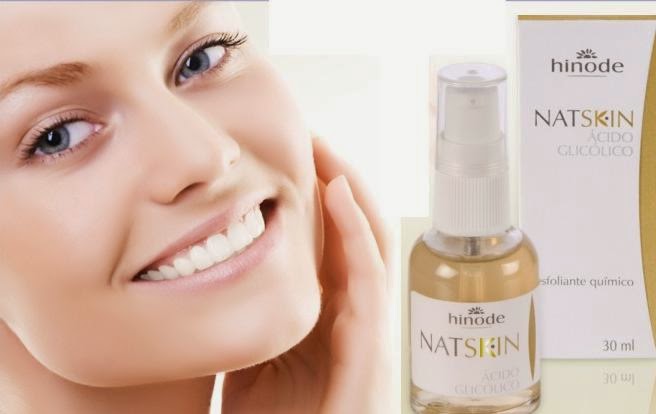It is a fruit acid. It is part of the family of alpha hydroxy acids such as citric acid or lactic acid.Glycolic acid is a type of acid derived from sugarcane and other sweets. It can be used in the composition of creams and lotions.The products can be handled from the prescription or can be sold in stores and pharmacies, and several brands may contain this acid are Hinode, Whiteskin, Demelan Whitening Cream, Derma AHA or Normaderm.
Why Glycolic Acid Is Used For
Some of the main effects of glycolic acid are:
- Skin rejuvenation by being able to exfoliate and stimulate the synthesis of collagen;
- Lightening of blemishes such as acne, melasma or sun-induced blemishes . Check out also the main treatments or natural ways to lighten the skin ;
- Make the skin thinner and silky ;
- Treatment of stretch marks . Also know what other treatment options are for stretch marks ;
- Remove excess dead cells .
The Concentration of Glycolic Acid
- In cosmetics, glycolic acid is present in small percentages in face and body care products: on average with 10% concentration.
- In beauty salons, the treatments performed by professionals in the aesthetic sector are usually packages with concentrations ranging from 20 to 30%
- Only in dermatological medical centers it is possible to have treatments with acid concentrations ranging from 50% to 80%.
Glycolic Acid Treatment For Face
The glycolic acid treatment is recommended for mature skin, to alleviate signs of aging and wrinkles and for oily and acneic skin .
Glycolic Acid For Acne
The glycolic acid peeling is recommended for those who have excess sebum because the more or less profound exfoliation regulates the production of sebum, frees the clogged pores and reduces the blemishes caused by acne like scars.
Glycolic Acid: Anti-Wrinkle Cream
The anti-wrinkle treatment consists in the application of products with a high concentration of glycolic acid, by specialized doctors.
When Not To Use Glycolic Acid
The peeling acid is not recommended in case of:
- pregnancy
- feeding time
- herpes simplex
- acne with papulo-pustular lesions
- radiotherapy
Possible Side Effects Of Glycolic Acid
Although glycolic acid is a relatively safe product, but it can cause side effects such as redness, burning, burning sensation of the skin a lesions, and hypertrophic scars.To avoid these undesirable effects, it is advised that any skin treatment is indicated by the dermatologist, who will know how to evaluate the skin type and what should be done for safety of each person.
Glycolic acid is a type of alpha-hydroxy acid (AHA) commonly used in skincare products. It is derived from sugar cane and is known for its small molecular size, which allows it to penetrate the skin effectively. Here’s a tabular guide to understand how glycolic acid works:
| Aspect | Description |
|---|---|
| Source | Derived from sugar cane. |
| Molecular Size | Small, enabling deep skin penetration. |
| Function | Exfoliates the skin by breaking down the bonds between dead cells. |
| Benefits | – Promotes new cell generation. <br> – Reduces fine lines and wrinkles. <br> – Improves skin texture and tone. <br> – Helps with acne and hyperpigmentation. |
| Usage | Found in cleansers, toners, serums, and peels. |
| Concentration | Typically ranges from 5% to 30% in over-the-counter products. |
| Skin Types | Effective for most skin types, but caution is advised for sensitive skin. |
| Precautions | – Can increase sun sensitivity. <br> – Should not be overused to avoid skin irritation. <br> – Patch test recommended before full application. |
Remember, while glycolic acid is generally safe for most skin types, it’s always best to consult with a dermatologist before starting any new skincare treatment, especially if you have sensitive skin or specific skin concerns.
